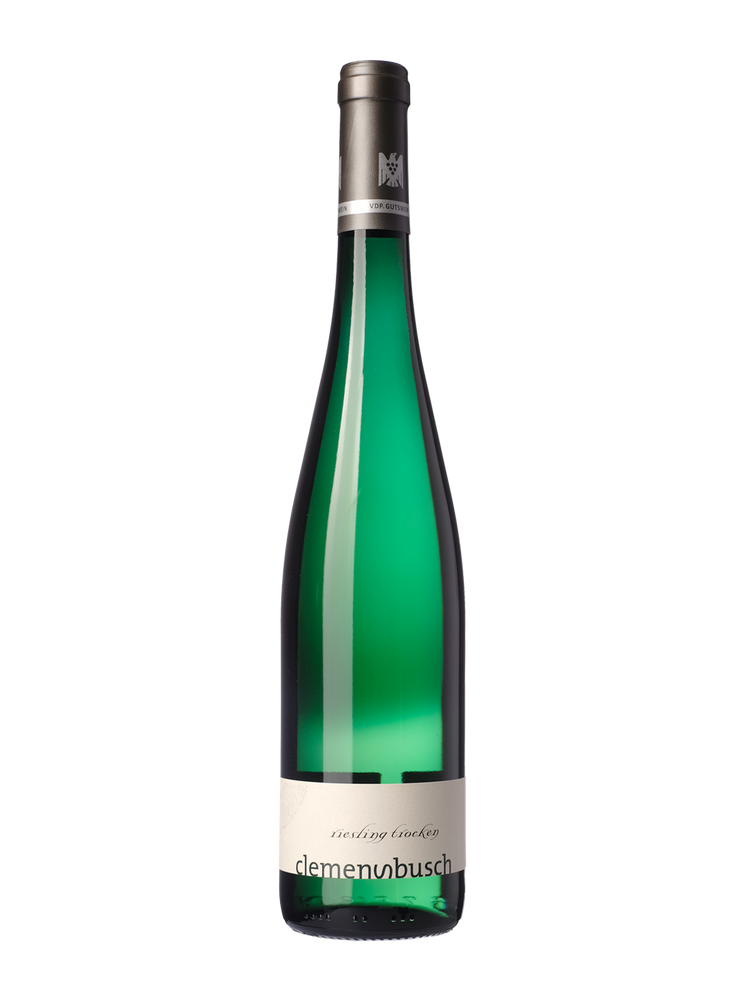Clemens Busch is one of the star producers in the Mosel, yet despite his fame, he’s really approachable and engaging. I caught up with him at a recent wine tasting to look at some of his wines.
Clemens is based in an area called Terrassenmosel, which has very steep slopes. ‘This means a lot of working by hand, of course,’ he says. ‘And we prefer to work with really old vines’, he says. ‘The oldest are 110 years old now and completely un-grafted.’ In fact, Clemens says that most of their vines are un-grafted across the Domaine. ‘We are really proud to have a good basis to make great wines.’

These un-grafted vines tend to have slightly smaller leaves, Clemens explains, giving a good balance to the fruit. I asked him to explain the unique way that vines are grown in the Mosel, each with a single stake, rather than trained on a trellis. When he prunes, does he leave short spurs, or does he leave longer canes?
‘We make a heart,’ he says, showing me a picture of the pruned vine: two canes are taken and looped over, and joined to the stake, with the canes sketching the shape of a heart. This training method has the potential to produce quite a lot of grapes. ‘We prefer to have a sure harvest, and then we make a green harvest. This way we can regulate the final crop better.’

Clemens is also a pioneer of biodynamic farming in the region. ‘We have been working biodynamically for 15 years now,’ he says. ‘We were one of the first in the Mosel and we still have a good reputation for farming this way.’ Even now in the Mosel, many producers will make their Rieslings in a predominantly off-dry style, but Clemens goes against the grain. ‘90% of our Rieslings are made in the dry style,’ he says.
Another pressing question centres on the topic of ever-changing growing conditions. Has the change in climate been noticeable in the Mosel over the last 15 years?
‘Of course,’ he replies. ‘The alcohol level has gone up a bit but working with old vines gives us good stability. The roots are very deep: if there is too much rain it is not so important, and if it is too dry it is also not so important. Old vines are working better with climate change.’ The Mosel had a hot vintage in 2020. Yet the top wines, the GGs (Grand Cru’s), have just 12.5% alcohol with perfect balance.
What does Clemens do for weed control in his vineyards? ‘For us, there is no problem, we don’t need to control them. Our vineyards are dry, and many of them have only stone or rock, so there isn’t much chance for weeds to grow.’

The most important soil type in the Mosel is grey slate, but Clemens also has red and blue slate across his vineyards. He believes they give different mineral expressions to the wine. Can you taste the difference in the wines? ‘Of course. This is important for us. So, we use nothing for vinification, just a little sulphite addition before bottling.’ The resulting wines are completely unique to their vineyards.
At the winery, Clemens vinifies his wines in large, old oak barrels; the traditional Mosel fuders of 1000 litres. Most age for at least 12 months in barrel on their lees, but in some wines, it’s even longer with Rieslings aged up to two years on their lees. This not only changes the structure of the wine (adding further weight and texture) but also greatly increases the wine's ageing potential.
Presumably, these wines, which taste great young, also age well?
‘Yes, I have a range of different vintages with me [Clemens is showing wines at a tasting when I speak to him]. It’s important to show the ageing potential of Riesling. The oldest is 2016, and it has spent five years in the bottle, but it’s not at the end of its development.’


